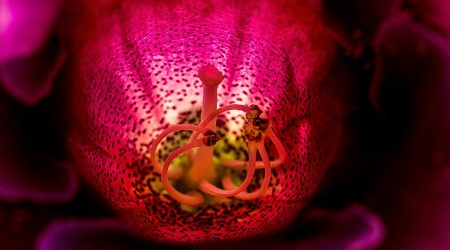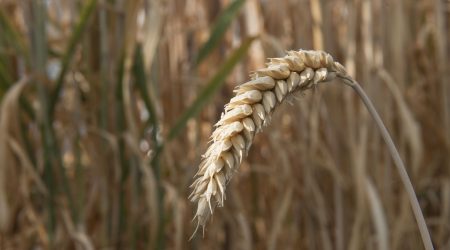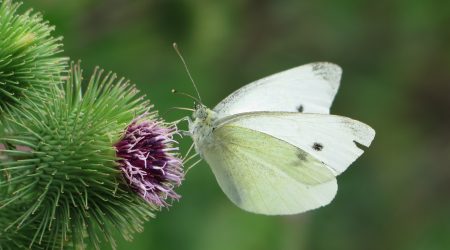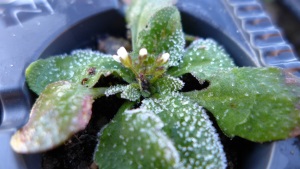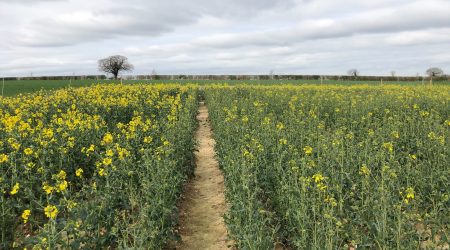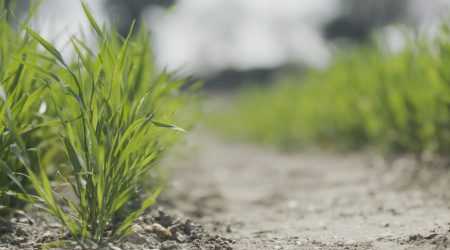An international team are dissecting the way plants sense and remember winter cold, revealing insights into fundamental biology and addressing global challenges such as climate change in the process
For several decades, understanding how plants sense and remember winter cold has been the focus of the Dean group, here at the John Innes Centre.
Plants face the challenge of changing seasons and must time their growth and development just right. As Dr Robert Maple, a lab member, observes:
Some plants need winter (or low temperatures) in order to flower in spring, a process known as vernalization.
The 12 members of the Dean group focus their research around one gene – Flowering Locus C (FLC). This gene acts as a molecular brake on flowering that is lifted throughout winter to allow plants to flower in spring.
“It reminds me of the ancient Indian parable about the group of blind men trying to describe an elephant. Each of us is studying one small aspect of FLC regulation and at first it feels daunting to understand how the tusk I’m examining is connected to the tail my lab mate has discovered. But when we share, listen and interpret each other’s data together, we have the chance to find a fuller form of reality”, reflects Dr Patricia Garay, a postdoctoral researcher in the group.
Dr Garay is one of the newest members of the team, which spans 11 nationalities and a range of scientific backgrounds, from mathematics to neuroscience. Being a large, diverse group has advantages.
“It helps to refine understanding through discussion and explanation”, says Dr Elsa Franco Echevaria.
It also creates a supportive environment, adds Research Assistant, Shuqin Chen, who manages the 12,000 seed lines.
PhD student Svenja Reeck highlights another benefit of being a big group.
“The speed of research is very fast because everyone is working on closely related topics, but from a different angle”.
Dr Congyao Xu continues, “The group is full of enthusiasm and collaboration”.
They work closely with other groups: the Martin Howard group, also at the John Innes Centre, and the Mariann Bienz group at the Medical Research Council Laboratory of Molecular Biology in Cambridge.
PhD student Mathias Nielsen explains, “Understanding epigenetic switching is a major issue in developmental biology, so it requires a large team to try to understand the process of how environmental factors affect the expression of a gene. This means close collaboration with the entire Dean lab, the modellers in Martin Howard’s group and our colleagues in the Mariann Bienz lab”.
One theme of the research is the initial molecular events when plants sense the cold, while another focuses on how the cold is remembered by FLC, through a process known as epigenetic silencing.
The first theme examines what happens when FLC is first switched off in response to the cold. For a gene to produce a protein, it must first be transcribed into another molecular language – messenger RNA.
observes Svenja Reeck.
The team discovered that when this transcription process happens in the other direction, along the DNA strand, other RNA molecules are produced, and they play an important role in sensing the cold.
Known as COOLAIR these RNA molecules are described as antisense non-coding RNA because they do not produce a protein, unlike the “sense” FLC messenger RNA, which will put the brake on flowering.
“I am studying the role of COOLAIR, the anti sense RNA of FLC, at the early stage when plants are exposed to cold”, says Dr Pan Zhu.
Together with Dr Yusheng Zhao and other team members, they recently revealed how the first frost of autumn triggers a spike in COOLAIR, which begins the transcriptional shutdown.
To delve deeper into these mechanisms, other members of the team are studying how these molecules behave in warm temperatures.
As Dr Eduardo Mateo-Bonmati explains: “In the warm, FLC is also regulated by COOLAIR RNAs. A number of proteins have been found to affect FLC transcriptional output by controlling COOLAIR transcription and processing. My project aims to mechanistically unpick the role of some of those proteins”.
Dr Minglei Yang investigates the structure of these important RNA molecules and brings skills developed in the Dr Yiliang Ding group at the John Innes Centre, who have pioneered the study of the shape of RNAs and how this affects their function.
“The physical properties of the DNA and RNA itself may have a hidden role in gene regulation”, suggests Dr Yang.
Once a plant has successfully stopped transcription of FLC in response to the cold, it must then be able to remember the cold.
Earlier seminal work by the group uncovered that the cold is remembered in a heritable way through epigenetic silencing. Rather than changes to DNA itself as in genetic inheritance, other mechanisms around the DNA confer molecular memory through switching the gene on and off and are heritable.
Several members of the lab are working to learn more about this switch.
Dr Anna Schulten takes a structural-biology perspective: “The Polycomb Repressive Complex 2 (PRC2), as well as multiple PRC2 accessory proteins, are required to switch FLC to a silenced state.
“Focusing on the role of PRC2 accessory proteins VIN3 and VRN5 in this process, I am part of the team investigating the core events underlying epigenetic switching mechanisms”.
This project involves collaboration with the Bienz lab in Cambridge, who have expertise in structural biology from signalling in cancer.
“I gave a seminar at the Laboratory of Molecular Biology and during the discussion afterwards we found parallels in the signalling – that they both required a particular type of protein oligomerization”, explains Professor Dame Caroline Dean.
Another approach focuses on how a single cell inside a plant remembers the cold. Often, in experiments, plant tissue containing many cells is crushed together, then analysed giving an averaged overview of what is going on.
Svenja Reeck describes the advantage of zooming in on a single cell:
These two broad themes of research often interweave, such as Dr Geng-Jen Jang’s project:
“I study the role of biomolecular condensates in both the transcriptional mechanism and the epigenetic memory of FLC regulation”.
Dr Silvia Costa explores the intersection of transcription at FLC with DNA replication and how this affects its epigenetic state.
“I am a bit of an outsider because no one in the group works on DNA replication, but I get a lot of input on the RNA transcription side since everyone in the lab works on transcription”.
Collaboration with the Howard group at the John Innes Centre involves using mathematical modelling to examine how plants sense and remember the cold.
“FLC has a tendency to ‘remember’ its transcription state and I make mathematical models for how this property affects gene expression in different cells of the same root, before there is any signal to remember’, explains Dr Rea Antoniou-Kourounioti.
This approach has provided new insights, including how plants respond to temperature and adapt to different climates.
As Professor Dean says, “Plants monitor long-term averages as well as peaks and troughs”.
The in-depth dissection of one gene that determines how plants sense the cold illustrates the impact of fundamental science.
says Professor Dame Dean.
“We have to understand how plants cope with unpredictable weather patterns if we’re ever going to have sustainable food production in the future. Everything we learn is immediately and directly translatable”.
The group has previously worked with Dr Judith Irwin to translate some of their fundamental understanding into brassicas to develop new crops and this is now being continued by Professor Richard Morris at the John Innes Centre.
“Climate change has been imposing great challenges on modern agriculture. Deep understanding of temperature-sensing by plants may help tackle this problem in the future”, reflects Dr Yusheng Zhao.
It has an impact beyond plants, too.
“Our research has taken us into core processes of gene regulation; it’s not flowering-specific at all”, comments Professor Dean.
Dr Marc Fiedler, from the Bienz lab in Cambridge, explains:
“We are coming from mammalian biology to find similar principles being used in plants. The parallels in how biology finds similar solutions between vastly different species is striking”.
“It is engaging that the more we know, the more we realise we are just scratching the surface”, reflects Dr Eduardo Mateo-Bonmati.








